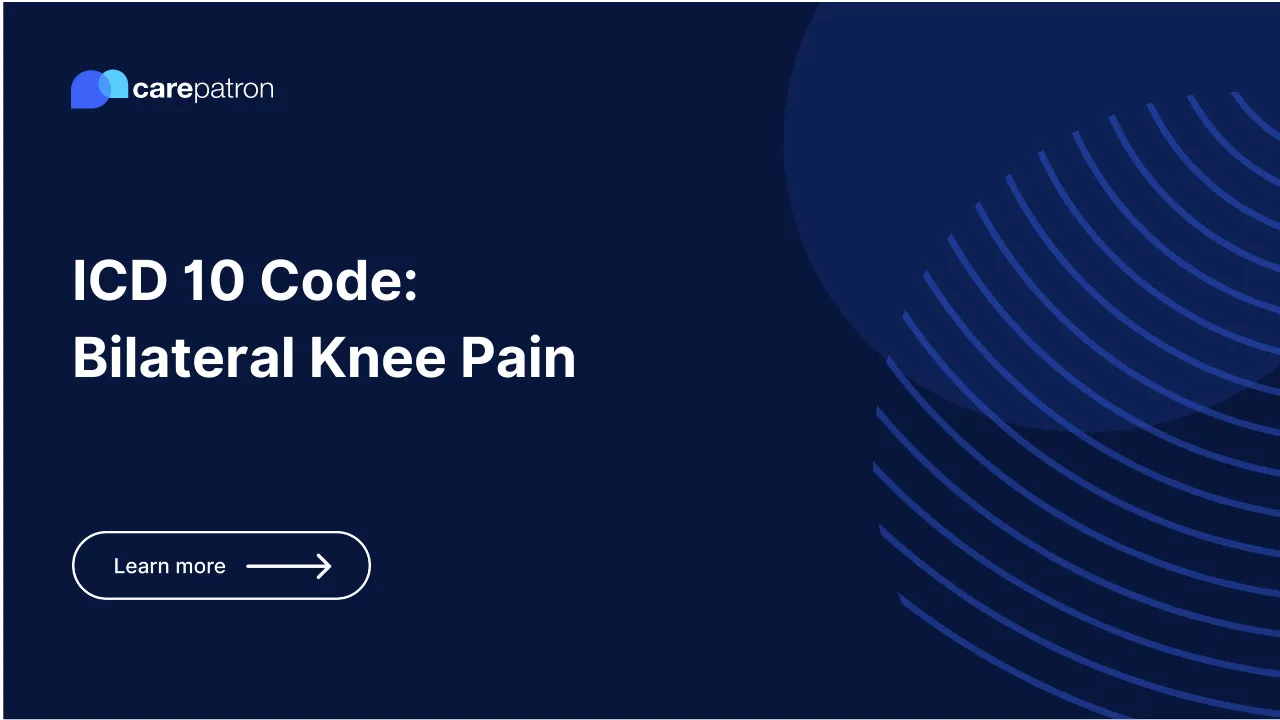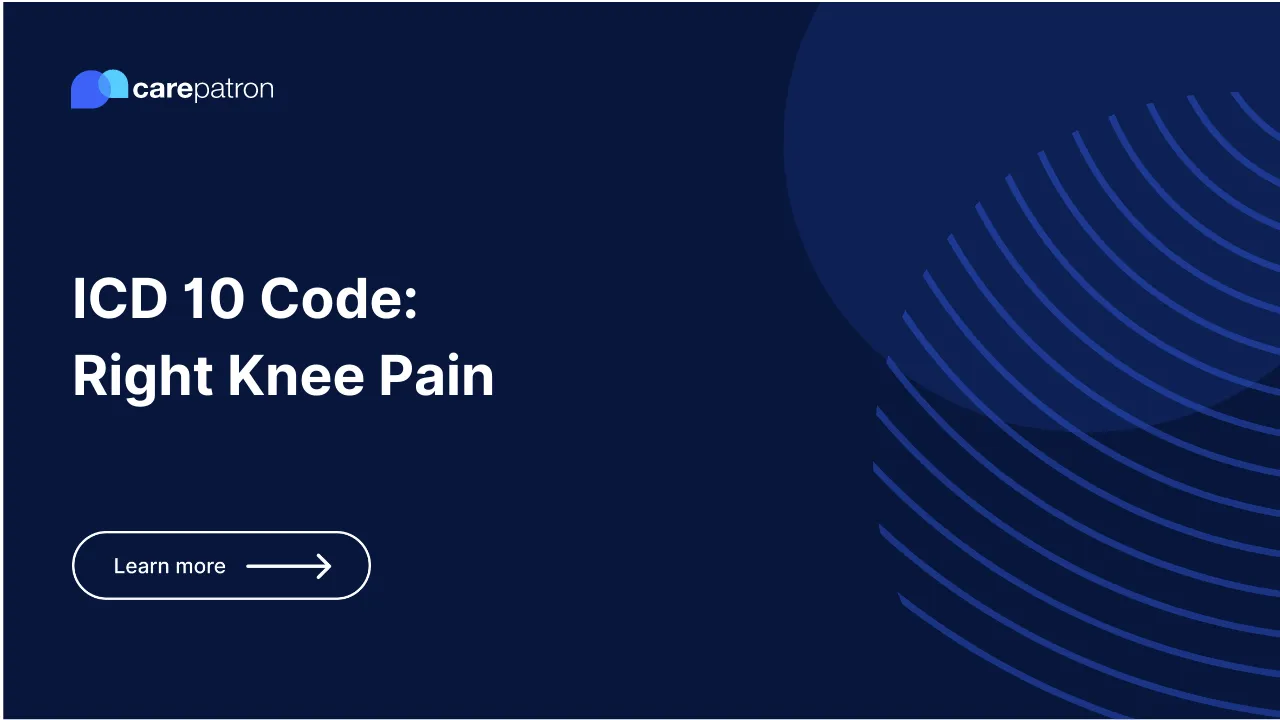Back Pain ICD-10-CM Codes | 2023
Discover the commonly used ICD-10 codes for diagnosing back pain, their clinical descriptions, billability, and synonyms.

What ICD-10 Codes are Used for Back Pain?
Back pain is a common health complaint that various conditions can cause. The International Classification of Diseases, Tenth Revision (ICD-10) provides specific codes to diagnose and document this condition accurately. Here are some of the most commonly used back pain ICD-10 codes, along with their clinical descriptions:
- M54.5 (Low back pain): This code was previously used for general low back pain. However, as part of the annual updates made by CMS (Centers for Medicare & Medicaid Services), this code has been replaced with more detailed ones as of October 2021.
- M54.50 (Low back pain, unspecified): This code is used when the source of the patient's low back pain is unclear. It covers general cases of low back pain where no specific cause has been determined.
- M54.51 (Vertebrogenic low back pain): This code is used when the pain in the lower back originates from the vertebrae. Conditions warranting this code include disc herniation, spinal stenosis, or other vertebral disorders leading to back discomfort.
- M54.59 (Other low back pain): This code covers other types of low back pain that do not fall under the previous categories. This might include muscular back pain or pain resulting from injury or strain.
- M54.6 (Pain in thoracic spine): This code is used for pain in the middle section of the spine, also known as the thoracic region. Conditions like thoracic outlet syndrome or a thoracic herniated disc may be classified under this code.
- M54.16 (Radiculopathy, lumbar region): Also known as sciatica, this code is used when nerve root irritation in the lumbar region leading to pain, numbness, or weakness radiating down the leg.
- M54.31 (Sciatica, right side): This code is used when sciatica specifically affects the right side. Symptoms might include sharp pain, numbness, or tingling that starts in the lower back and travels down the right leg.
- M54.32 (Sciatica, left side): This code is used when sciatica affects the left side, with similar symptoms to M54.31 but affecting the opposite leg.
- M54.9 (Dorsalgia, unspecified): This code is used for unknown back pain, covering cases where it's unclear where the pain is located or the underlying cause.
- M54.14 (Radiculopathy, thoracic region): This code is used when nerve root irritation occurs in the thoracic region, causing symptoms like pain, numbness, or weakness radiating around the rib cage.
Understanding these codes is crucial for effective communication in healthcare settings, especially between providers and insurers. Check Back Pain ICD Codes for an in-depth look.
Finally, here's an explainer video that further elaborates on the importance and usage of these ICD-10 codes:
Which Back Pain ICD codes are Billable?
The following back pain ICD-10 codes are commonly used and billable:
- M54.50 (Low back pain, unspecified): Yes
- M54.51 (Vertebrogenic low back pain): Yes
- M54.59 (Other low back pain): Yes
- M54.6 (Pain in thoracic spine): Yes
- M54.16 (Radiculopathy, lumbar region): Yes
- M54.31 (Sciatica, right side): Yes
- M54.32 (Sciatica, left side): Yes
- M54.9 (Dorsalgia, unspecified): Yes
- M54.14 (Radiculopathy, thoracic region): Yes
It's important to note that the billability of these codes can depend on various factors, including the specifics of the patient's insurance plan and the exact nature of their condition. Therefore, it's always best to check with the insurer or a medical billing professional when determining which codes are billable for a particular case.
Clinical Information
- Back pain is a common medical condition that affects people of all ages and can be caused by various issues, from minor muscle strains to severe conditions such as herniated discs or spinal stenosis.
- The ICD-10 codes for back pain are designed to help healthcare providers accurately diagnose and document these conditions. They provide a standardized language for clear communication between doctors, patients, and insurance companies.
- The codes range from general ones like M54.50 (Low back pain, unspecified) to more specific ones like M54.51 (Vertebrogenic low back pain), which refers to back pain originating from the vertebrae.
- Radiculopathy, represented by codes M54.16, M54.31, and M54.32, refers to nerve root irritation, often resulting in pain, numbness, or weakness radiating down the leg or around the rib cage.
- Dorsalgia, denoted by code M54.9, refers to pain in the back that may be chronic or acute and can occur anywhere along the spine.
- Each code is designed to represent a specific type of back pain, allowing for precise diagnosis and treatment. This precision also helps when billing insurance companies, as it clearly indicates the patient's condition.
- Healthcare providers must stay up-to-date with the latest changes in ICD-10 codes for back pain, as these codes are subject to annual updates by CMS (Centers for Medicare & Medicaid Services).
- Always consult the current ICD-10-CM Diagnosis Codes manual or a medical billing professional to ensure the correct and billable codes are used for each patient's specific condition.
Commonly asked questions
A Back Pain ICD code is used when a healthcare provider diagnoses a patient with back pain. These codes are used for documenting the specific type of back pain in the patient's medical record and for billing purposes. They provide a standardized language for clear communication between doctors, patients, and insurance companies.
Yes, Back Pain diagnosis codes are typically billable. This means they can be used in a reimbursement claim to an insurance company. However, the specifics of what is covered can vary based on the patient's insurance plan and the exact nature of their condition. Always check with the specific insurer or a medical billing professional when determining which codes are billable for a particular case.
Treatment for back pain varies depending on the specific diagnosis. Common treatments may include physical therapy, medication, lifestyle changes like exercise and improved posture, and in some cases, surgery. For example, radiculopathy (codes M54.16, M54.31, and M54.32) often require physical therapy or surgery, while unspecified low back pain (code M54.50) might be treated with pain relievers and rest.
A diagnosis code for Back Pain precisely describes the patient's back pain condition. Each code corresponds to a specific type of back pain, allowing healthcare providers to document the patient's condition, plan appropriate treatment accurately, and bill insurance companies correctly. For example, code M54.51 indicates that the patient has vertebrogenic low back pain, meaning the pain originates from the vertebrae.


.png)




.webp)
.webp)
.webp)
.webp)
.webp)
.webp)
.webp)
.webp)
.webp)
.webp)
.webp)
.webp)
.webp)
.webp)
.webp)
.webp)
.webp)
.webp)
%2520(1).webp)
.webp)
.webp)
.webp)
.webp)
.webp)
.webp)
.webp)
.webp)
.webp)
.webp)
.webp)
.webp)
.webp)
.webp)
.webp)
%2520(1).webp)
.webp)
.webp)
.webp)
.webp)
.webp)
.webp)
.webp)
.webp)
.webp)
.webp)
.webp)
.webp)
.webp)
.webp)
.webp)
.webp)
.webp)
.webp)
.webp)
.webp)
.webp)
.webp)
.webp)
.webp)
.webp)
.webp)
.webp)
.webp)
.webp)
.webp)
.webp)
.webp)
.webp)
.webp)

.webp)
.webp)
.webp)
.webp)
.webp)












.webp)
.webp)




.webp)


